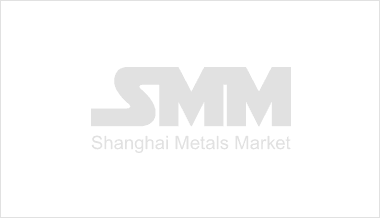- Futures
- Base Metals
- New Energy
- Ferrous Metals
- Rare Earth
- Scrap Metals
- Minor Metals

[SMM Morning Meeting Summary: Domestic tin market generally shows a pattern of weak supply and demand; tin prices may continue to fluctuate rangebound] On the international macro front, the US GDP contracted by 0.3% QoQ in Q1, with core PCE inflation rising to 3.5%, consumer confidence falling to a historic low, and the manufacturing PMI pulling back to 48.7, indicating increased downward pressure on the economy. The US Fed kept interest rates unchanged for the third consecutive time, emphasizing the heightened risks of inflation and rising unemployment. The US dollar index fluctuated at highs, suppressing the overall valuation of the non-ferrous metals sector. Domestically, the tin ore market generally shows a pattern of weak supply and demand. In terms of supply, refined tin production is expected to decline MoM in May, but the spot tin market will still face inventory tightness in the short term. The Bisie tin mine in the Democratic Republic of the Congo resumed production in phases, with the first batch of tin concentrates shipped on May 9. It is expected to enter the smelting process in June, making it difficult to alleviate the tight supply situation in the short term. On the demand side, no significant improvement has been observed so far. High tin ingot prices have led to sluggish restocking willingness in the electronics/home appliance industries, causing blockages in industry chain transmission and further reducing the circulation of scrap. The operating rates of refined tin smelters in Yunnan and Jiangxi provinces remained low, with a combined operating rate of 56.85%. TCs were at historic lows, putting pressure on smelting profits. Looking ahead, it is expected that before any significant favourable or unfavourable macro factors emerge, tin prices may continue to fluctuate rangebound. Investors need to closely monitor the progress of Sino-US economic and trade talks, the trend of the US dollar, and changes in domestic policies, and operate cautiously...
He changed his tune again in just two days! Trump agreed to postpone imposing a 50% tariff on the EU
Recently, data released by Thailand's Ministry of Industry showed that the number of Chinese automotive parts enterprises registered in Thailand reached 420 in Q1 2025, a threefold increase from 2020, with their share of foreign-funded enterprises surging from 7% to 22%. The Thailand Board of Investment (BOI) predicts that by 2030, the total investment by Chinese parts enterprises in Thailand will exceed $5 billion, driving the share of Thailand's new energy vehicle production from the current 5% to 30%. Dianchiwang (Battery Network) has noticed that in recent years, Chinese lithium battery enterprises have collectively moved "south" to Southeast Asia, accelerating their local factory construction and layout, with many enterprises establishing their first overseas factories in Southeast Asia.
